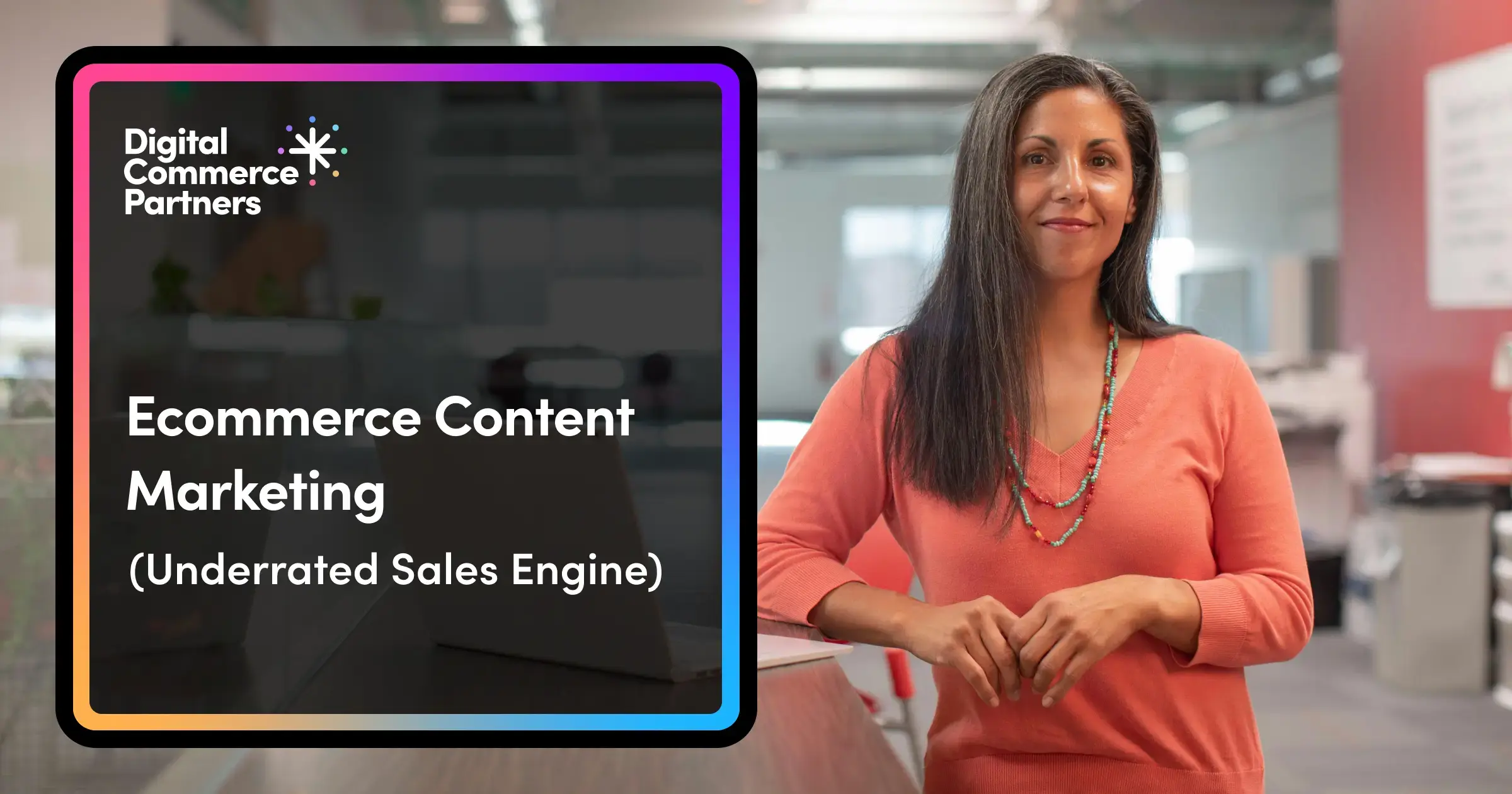There are dozens of ways to market an ecommerce brand using content: social media, YouTube, email, and influencer marketing. Yet many brands overlook the basics of on-site content marketing.
Your product pages, collections, and educational content are powerful assets for traffic and revenue. They show up in search when customers are ready to buy. And they move shoppers towards purchase decisions when they’ve found your brand.
But driving revenue takes more than checking SEO boxes.
Your site is where the sale happens. So your website content has to guide, persuade, and convert. Not just fill space.
This guide shows you how. Based on real results from our client projects, we’ll walk you through ecommerce content marketing strategies for optimizing your product pages, category pages, blog content, and more.
Whether you’re trying to grow organic traffic or boost conversions from paid and social, this is where it all starts.
In this article:
Rank higher, sell smarter.
Shopify’s built-in tools are solid, but in competitive markets—where the stakes are high—basic SEO won’t cut it. Our Shopify SEO services focus on the 20% that drives real results.
What Is Ecommerce Content Marketing?
Ecommerce content helps people discover your brand and make informed buying decisions. It appears on your product pages, category pages, and in the margins, including reviews, images, FAQs, and internal links.
If you’re wondering how to start content for ecommerce, it begins with understanding the purpose of each content type and building from there.
Unlike other types of content marketing, ecommerce content marketing has a more direct job. It needs to help shoppers feel confident enough to click “Add to Cart.” At the same time, it has to show search engines what your pages are about and why they matter.
Why Having an Ecommerce Content Strategy is So Important for Your Bottom Line
Ecommerce content isn’t just there to describe products. It drives how people find you, why they trust you, and whether they buy from you or someone else. When done right, it powers discovery, boosts conversions, and builds lasting brand value.
Here’s why it matters more than ever:
1. It Powers Rankings Where They Matter Most (PLPs and PDPs)
Want real traction in organic search? Nail your Product Listing Pages (PLP) and Product Detail Pages (PDP) content. That’s where the money is.
Every optimized line of copy on your PLPs and PDPs helps search engines understand not just what you’re selling, but who it’s for and why it matters.
When you include specific product attributes, targeted keywords, and contextual language aligned with buyer intent, you’re more likely to appear in purchase-ready queries.
That means higher visibility for high-converting terms like “best running shoes for flat feet” or “vegan leather laptop bag under $100.”
2. It’s One of the Easiest Ways to Increase Conversions
Your content should be constantly working to make it easy for someone to say “yes.”
Great content is about more than a simple description of a product. From a customer perspective, it also reduces uncertainty, answers questions before they’re asked, and nudges shoppers toward action.
Detailed descriptions, clear specs, and smart copywriting all do the heavy lifting your images can’t.
Add in user-generated content (USG)—especially reviews—and you turn interest into sales.
3. It Builds a Brand that Customers Remember
Good ecommerce content does more than just sell products. It creates an engaged community that loves your products, one that keeps coming back.In crowded categories, you win by being more memorable. That starts with a brand voice people recognize, and content that reinforces it at every step.
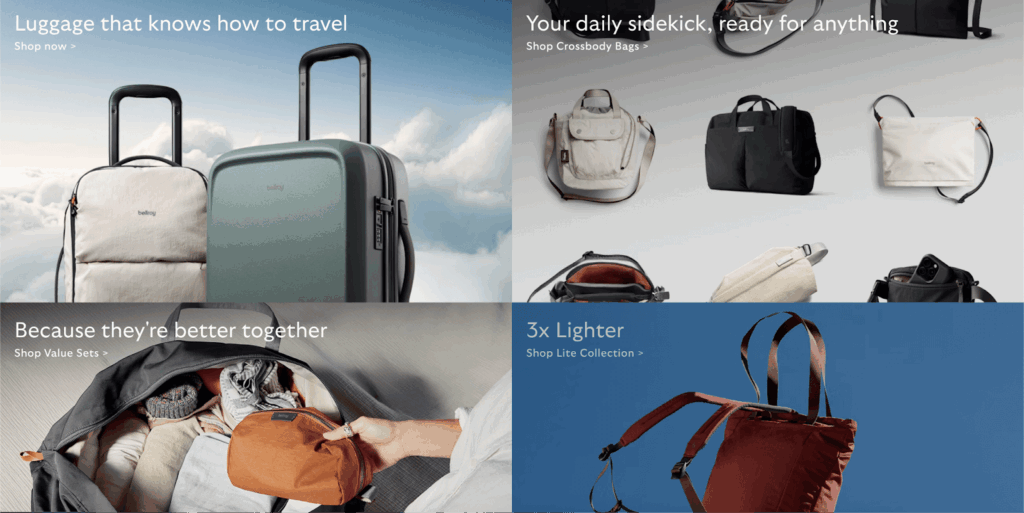
Whether it’s a cheeky collection page intro, a buyer’s guide that answers real questions, or product copy that sounds like it was written by a human (not a template), your content is what keeps people coming back.
Not just because it helped them make a purchase, but because it made them feel something about your brand.
Build a Revenue-Ready Foundation with These Ecommerce Content Essentials
If your ecommerce content isn’t driving traffic, building trust, and converting consistently, the problem might not be strategy; it could be fundamentals. Before you dive into advanced SEO tactics or creative campaigns, you need to get the basics right.
The list below outlines the essential building blocks of high-performing ecommerce content that work together to convert browsers into buyers.
1. Set the Technical Foundation with On-Page SEO
If your ecommerce pages aren’t showing up in search, it’s usually because Google isn’t getting strong enough signals. That’s where strategic on-page SEO comes in, and it starts with a consistent structure across every product and category page.
We’re seeing these same fundamentals impact brand mentions and traffic from LLMs like ChatGPT.
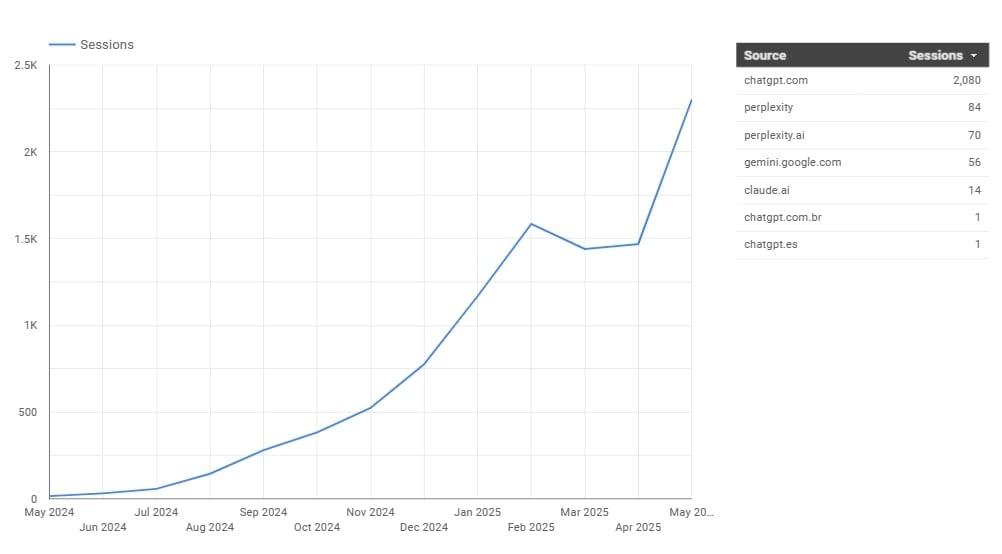
Ensure that your title tags, meta descriptions, H1 Headers, and URLs are consistent and aligned.
Each one should reflect the same target keyword, follow best practices, and be written for both search engines and shoppers.
For example, a product page titled “Men’s Hiking Shoes | Lightweight & Durable” should have a matching URL like /mens/hiking-shoes, and an H1 that reinforces the same phrasing.
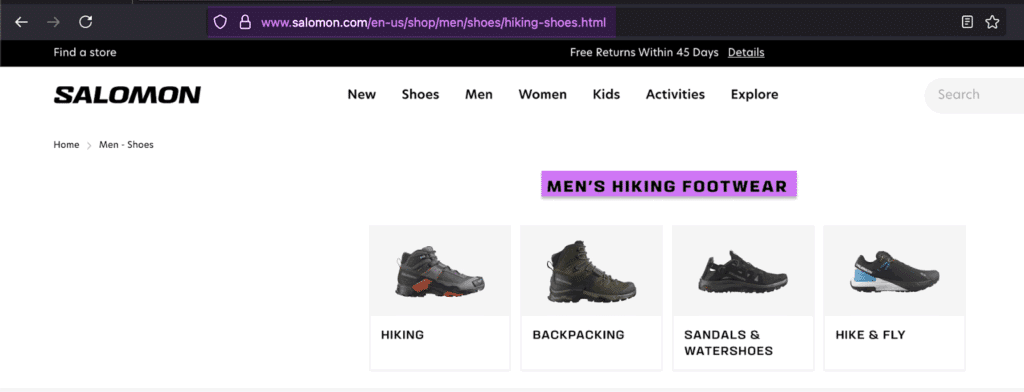
Keep your title tag under 60 characters, place the keyword as close to the beginning as possible, and write meta descriptions that highlight a unique benefit or outcome.
Use H1s as clear page titles—not keyword-stuffed phrases—and make sure every page has only one.
When your metadata, headlines, and URLs are working together, Google can confidently rank your page for high-intent queries.
2. Create Product Content That Sells Benefits, not just Features
Most ecommerce product descriptions are written like spec sheets — and that’s a mistake. Instead of just listing features, effective content strategies for ecommerce focus on selling benefits that resonate with the customer.
If you want your product pages to convert, your descriptions need to act like salespeople, not catalogs.
Start by identifying the key benefit that matters most to your ideal customer: what problem does the product solve? How does it fit into their life? Then frame the description around that outcome.
For example, instead of saying “Polyester lining, adjustable strap, 26L capacity,” write something like “It’s built with lightweight, ultra-durable materials that won’t weigh you down whether you’re hiking your favorite peak or heading into town.”
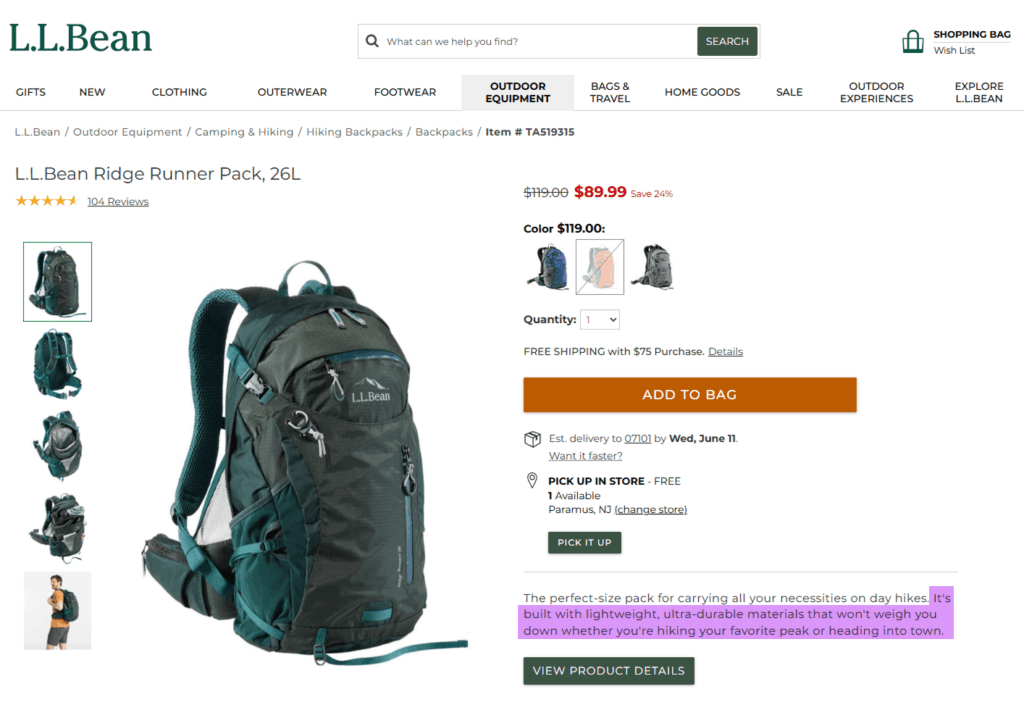
Avoid simply duplicating the manufacturer’s copy. It’s not only bad for SEO, but it also fails to differentiate your brand.
Every product should have unique, benefit-first copy that emphasizes what makes it worth buying. Use sensory language, short paragraphs, and natural keywords to keep your copy persuasive and crawlable.
3. Structure Category Pages for SEO and UX
Category pages, or PLPs, are some of the most powerful SEO assets on your site. These pages target broad, high-intent keywords, such as “women’s pajama sets” or “vegan skincare,” and often generate more traffic than individual product pages. But only if they’re optimized properly.

Start with a short, keyword-focused introduction at the top of the page. This content should clarify what the user will find, highlight key product types or differentiators, and include natural variations of your primary keyword.
Aim for 100–150 words; enough to signal relevance to Google without pushing products too far down the page.
From there, strengthen the page with internal links to related categories, featured products, and relevant guides or blog posts. Use consistent H1 headers and SEO-friendly URLs, and include schema markup where appropriate.
For the user, this intro content acts as orientation. For search engines, it provides clarity. And for your business, it’s the foundation of a scalable, traffic-generating PLP strategy.
4. Optimize Product Images for Speed, Clarity, and Search
High-quality visuals help shoppers evaluate your product, envision ownership, and build confidence to make a purchase. But they also impact page speed, accessibility, and SEO performance.
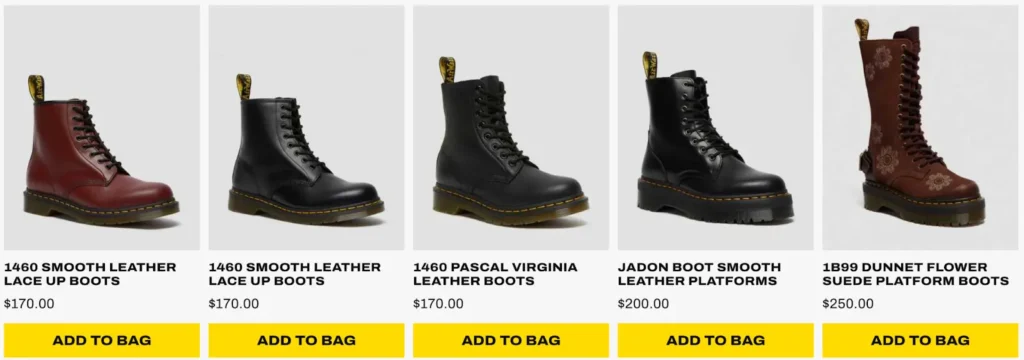
Every image should clearly showcase the product from multiple angles. Include close-ups of texture, scale references, and real-world usage when relevant. In categories such as apparel, home goods, or beauty, lifestyle imagery is often the tipping point between a bounce and a purchase.
Behind the scenes, optimize each file before uploading. Use descriptive, keyword-rich file names, such as vegan-leather-tote-bag-black.jpg, instead of generic names like IMG_4839.jpg.
Add concise, accurate alt text that describes the image in plain language to improve accessibility and SEO. Use next-gen formats like WebP to reduce file size without sacrificing quality, and implement lazy loading to speed up performance.
5. Add Reviews for Trust and Rich Snippet Eligibility
Before making a purchase, shoppers seek reassurance, and nothing builds trust faster than genuine customer reviews. They serve as instant social proof, helping visitors feel confident that your product will deliver on its promises. But they also have significant SEO value.

From a conversion standpoint, reviews answer unspoken questions and reduce hesitation. A product with detailed feedback and authentic experiences outperforms even the slickest copywriting.
Display them prominently on your product pages, and encourage photo submissions to make them even more persuasive.
From a search perspective, reviews contribute fresh, UGC that keeps your product pages active in Google’s index.
When paired with proper schema markup, they can also trigger rich results, such as star ratings, directly in the SERPs. This not only increases click-through rates but also helps your listing stand out in competitive spaces.
6. Use FAQs to Handle Objections and Capture Long-Tail Traffic
Even the most compelling product page can fall short if it doesn’t address buyer hesitation. That’s where a focused FAQ section comes in. It helps you answer common questions, overcome objections, and reduce cart abandonment, all while supporting your SEO efforts.
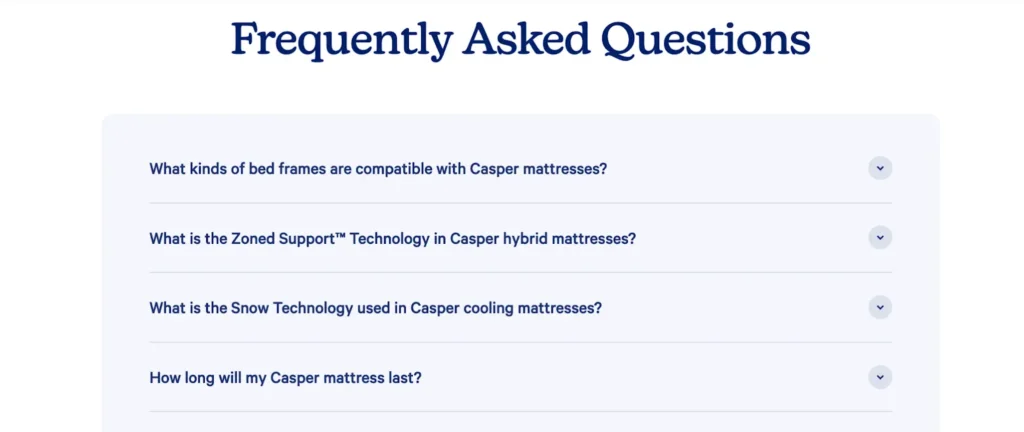
Start by identifying the top five questions customers ask before purchasing. These might include details about fit, compatibility, shipping times, returns, or usage scenarios.
For example, a question like “Will this mattress fit a European frame?” or “Is this skincare product safe for sensitive skin?” speaks directly to high-intent, long-tail search queries.
Write each answer clearly and conversationally. Avoid vague marketing speak; this is where clarity converts.
Use this section to link to relevant guides, sizing charts, shipping policies, or related categories to keep users engaged and reinforce your internal linking structure.
7. Design Every Page for Mobile First
Mobile traffic accounts for the majority of ecommerce visits. If your pages don’t load fast, display cleanly, and work intuitively on mobile, you’re losing conversions before you even have a chance to sell.
Mobile-first design starts with fast load times. This means you need to compress images, minimize scripts, and eliminate unnecessary design flourishes that drag down performance.

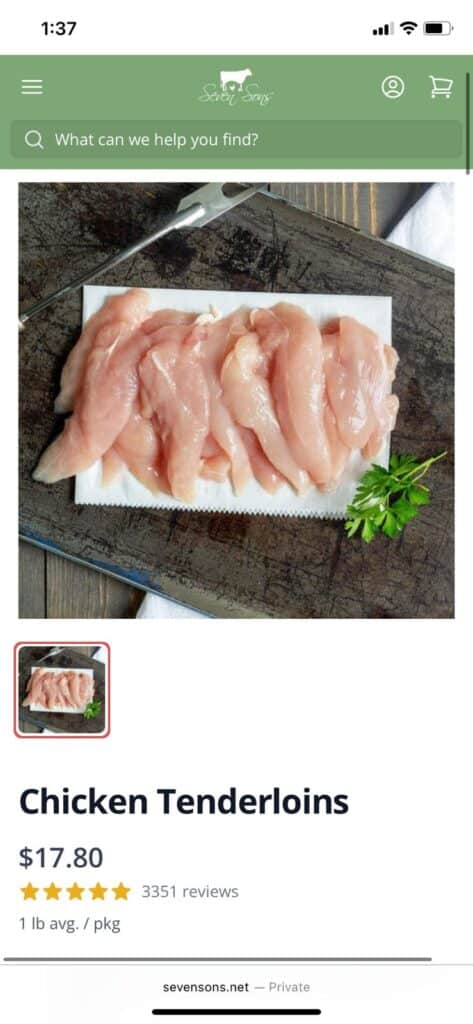
Next, make sure any text is legible without zooming, buttons are easy to tap, and interactive elements like carousels or filters work smoothly on touchscreens.
Finally, keep your content concise and scan-friendly. Lead with the most important information, position your CTAs within easy reach, and avoid clutter.
8. Format Content for Readability and Fast Decision-Making
Online shoppers don’t read, they scan. And when your content is cluttered, dense, or hard to follow, you’re adding friction to the buying process. The faster a shopper can absorb the key details, the faster they can make a decision to buy.

Keep paragraphs short, ideally no more than three lines. Use clear, descriptive subheadings to guide readers down the page. Highlight key points with bold text or visual cues, and structure content so the most important information appears first.
Avoid jargon and overly clever phrasing. Write in plain, direct language that mirrors how your customers talk and think. If a shopper has to slow down to figure out what you’re saying, you’re already losing momentum.
9. Use Visual UGC to Humanize the Buying Experience
Customer reviews build credibility, but visual content from real buyers makes products feel personal. When shoppers see people like themselves using your product, it creates emotional resonance that polished brand photos rarely achieve.
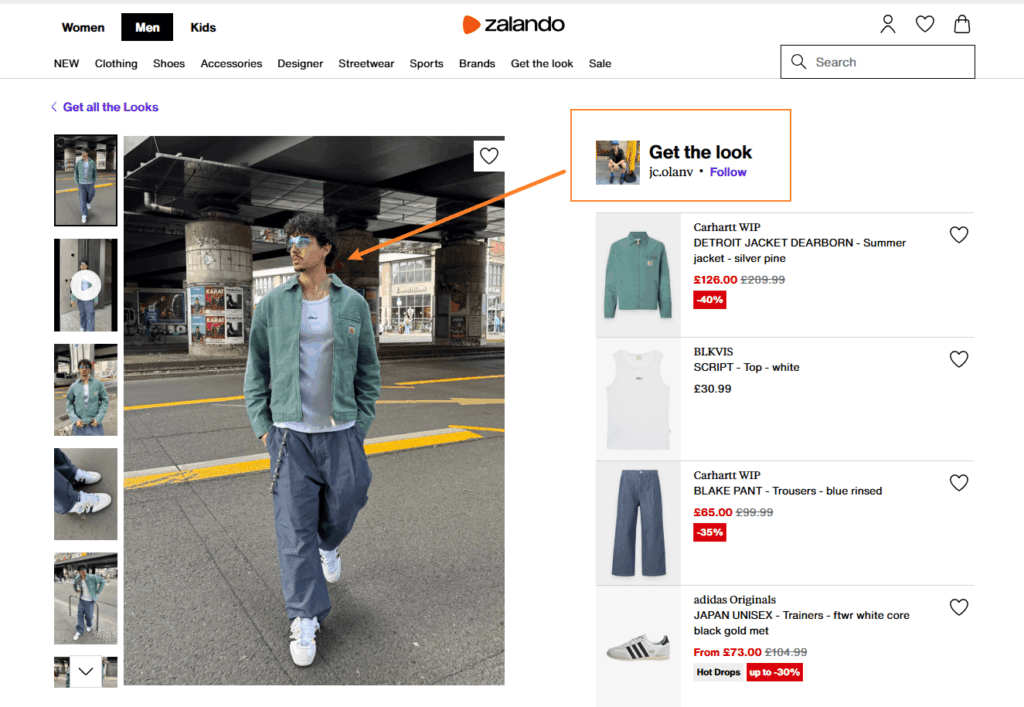
Pull in user-submitted images, social media posts, or tagged content that shows your product in real-world settings. Place this content alongside product photos, or integrate it into galleries and carousels. Highlight diversity in use cases, body types, lifestyles, or environments; whatever helps shoppers imagine the product in their own lives.
This kind of UGC reinforces trust and enhances product context by adding fresh visual content for SEO, and keeping your site feeling dynamic. If you’re serious about conversion, don’t just tell customers your product works. Show them people who already love it.
10. End Every Page with a Clear, Relevant CTA
Every ecommerce page—whether it’s a product, category, or guide—should end with a call to action that makes the next step obvious and easy.
On product pages, this might be an “Add to Cart” button, followed by supporting CTAs such as “Check Delivery Options” or “View Size Chart.”
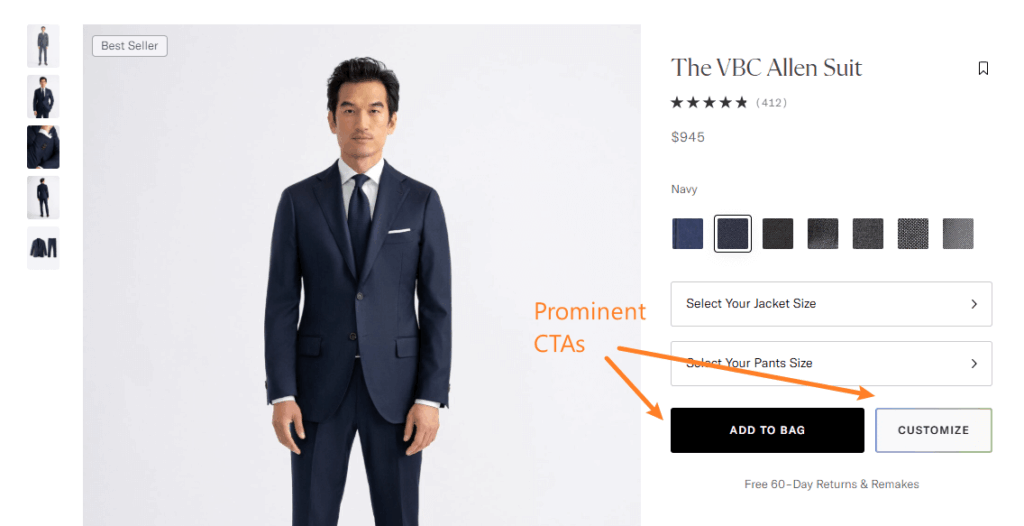
On category pages, it could be “Shop Bestsellers” or “Compare Styles.” For guides or educational content, direct users to a relevant product collection, quiz, or sign-up form.
The key is alignment. Your CTA should match the content’s purpose and the shopper’s intent. Vague prompts like “Learn More” or “Click Here” waste the momentum you’ve built. Strong CTAs, on the other hand, convert that momentum into action.
If you’ve done the work to inform, inspire, and build trust, the CTA is where you cash in on it. Make it count.
Advanced Ecommerce Content Strategies
Effective ecommerce content marketing is about aligning every piece of content with how your customers search, compare, and make purchase decisions. That means building a content ecosystem that supports the entire buyer journey from discovery to checkout.
Here are two advanced strategies we’ve used to drive consistent, measurable growth for ecommerce brands:
Create Multiple PLPs for Additional Keywords
One of the simplest ways to expand your SEO footprint is by creating additional PLPs that target specific, high-intent keyword variations. Instead of relying on a single, broad category like “Pajamas,” break it down into focused subcategories that match how people actually search.
With one of our clients, we applied this strategy by creating niche collection pages, such as “Floral Pajamas,” “Cotton Pajamas,” and “Summer Sleepwear.”
Each one was optimized with unique copy, targeted keywords, and relevant internal links, giving us multiple entry points into organic search without cannibalizing the core “Pajamas” category.
The result was a wider content net, stronger rankings across more specific queries, and increased visibility for seasonal and trend-driven products.
Here’s another example from a recent case study. We saw a 55% increase in organic traffic for this ecommerce brand in a highly competitive niche in just five months. All through our PLP expansion strategy:
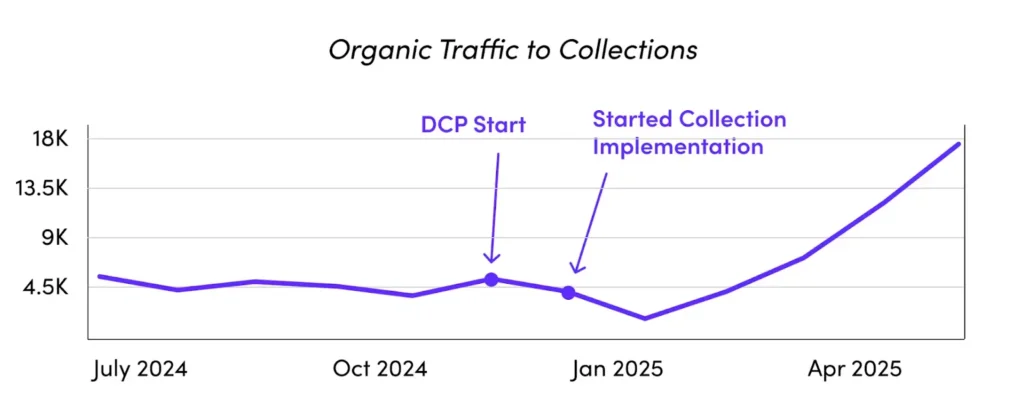
Create Landing Pages Tailored to Each Target Audience
If your ecommerce brand offers local delivery or serves specific regions, you’re sitting on a massive SEO opportunity: location-based intent.
We’ve seen great success building geo-targeted landing pages that rank for high-converting search terms, such as “grass-fed beef near me” or “grass-fed meat delivery in Tennessee.”
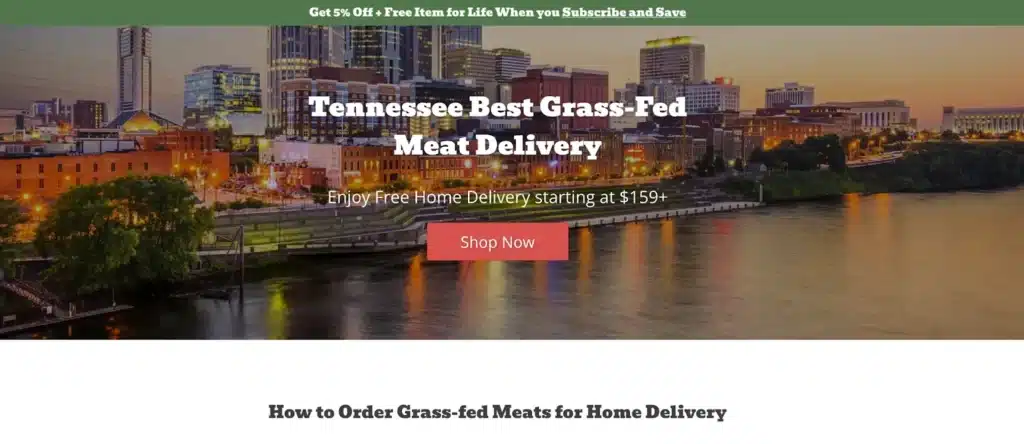
For this brand, we created dedicated landing pages for key cities and regions in their delivery network. Each page featured localized copy, product availability by region, and details of delivery timelines for customers in each location.
To support browsing and product discovery, we induced direct links to relevant PLPs and PDPs.
This gave Google clear geographic signals and created a smoother, conversion-ready path for local shoppers.
The result?
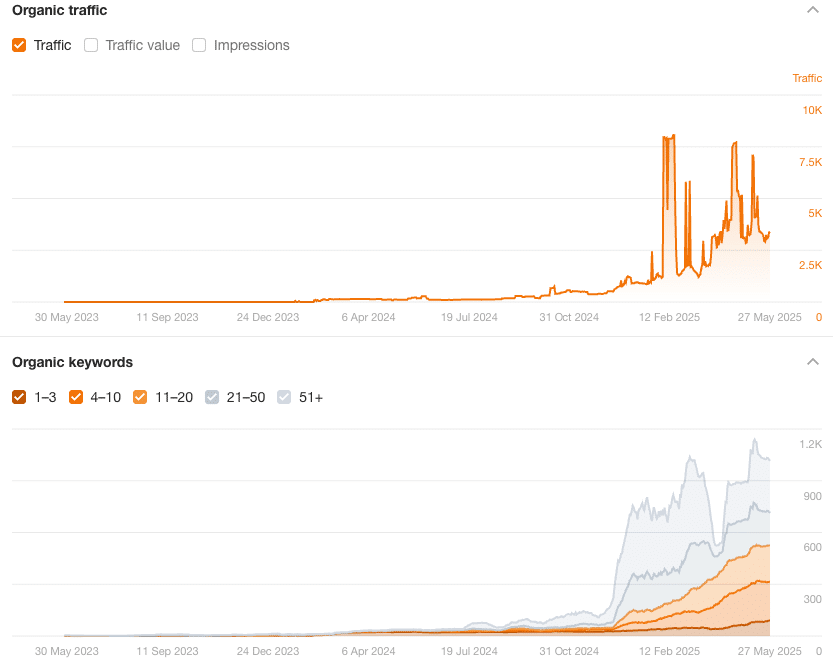
Stronger local SEO rankings and a significant uptick in qualified organic traffic, fueling sales and deliveries from their nearest distribution hubs.
Powerful Ecommerce Content Drives Measurable Revenue. Don’t Leave it to Chance.
Ecommerce content might look like any other copy, but when done right, it becomes a growth engine.
A smart strategy improves rankings, builds trust, and drives real revenue. It’s not about publishing more. It’s about publishing with purpose.
If you’re ready to turn your product and category pages into high-performing assets, we’re here to help.
Our team has years of experience building custom ecommerce content marketing strategies that attract organic traffic, convert more shoppers, and deliver measurable ROI. Check out our Ecommerce SEO Services page to learn more.

